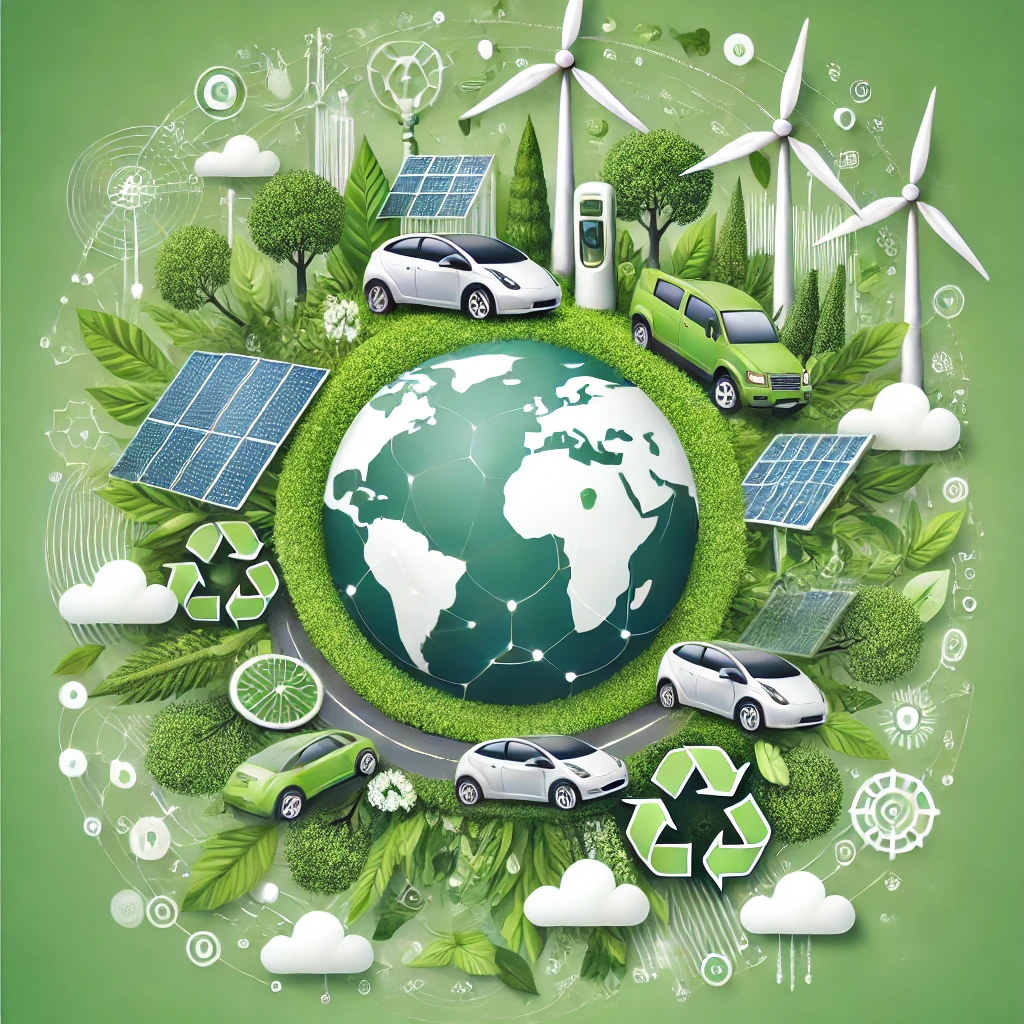The adoption of Electric Vehicles (EVs) is a pivotal step toward reducing environmental degradation and combating climate change. Unlike traditional internal combustion engine (ICE) vehicles, EVs rely on electricity instead of fossil fuels, significantly reducing greenhouse gas emissions. Here, we explore the key environmental benefits of EVs and the challenges that need to be addressed to maximize their positive impact.
1. Reduction in Greenhouse Gas Emissions
Transportation accounts for a significant portion of global carbon dioxide (CO2) emissions. EVs produce zero tailpipe emissions, meaning they do not emit pollutants like CO2, nitrogen oxides (NOx), or particulate matter directly into the atmosphere. This makes EVs a cleaner alternative to petrol and diesel vehicles.
Supporting Data:
- Emission Comparison: EVs powered by renewable energy can reduce lifecycle emissions by up to 50% compared to ICE vehicles.
- Global Impact: According to the International Energy Agency (IEA), transitioning to EVs could cut transportation-related emissions by nearly 30% by 2050.
2. Improvement in Air Quality

In urban areas, ICE vehicles are a major contributor to air pollution. Replacing them with EVs can lead to significant improvements in air quality, reducing health issues such as asthma, cardiovascular diseases, and respiratory problems.
Key Example:
Cities like Oslo, which have high EV adoption rates, report measurable improvements in air quality and reduced smog levels.
3. Lower Noise Pollution
EVs operate much more quietly than ICE vehicles, contributing to reduced noise pollution, especially in densely populated urban areas. This can improve the quality of life and create a more serene environment.
4. Reduced Dependency on Fossil Fuels
EVs help decrease reliance on finite fossil fuel resources, promoting energy security. By utilizing renewable energy sources like solar, wind, and hydroelectric power for charging, EVs can further minimize their environmental footprint.
5. Challenges in Battery Production and Recycling
While EVs offer numerous environmental advantages, their batteries pose challenges. The production of lithium-ion batteries requires mining raw materials like lithium, cobalt, and nickel, which can have significant environmental and social impacts. Additionally, improper disposal of used batteries can lead to environmental contamination.
Potential Solutions:
- Recycling Initiatives: Companies are developing technologies to recycle EV batteries and recover valuable materials.
- Sustainable Mining: Implementing ethical and environmentally friendly mining practices can mitigate the impact of raw material extraction.
6. Role of Renewable Energy

The environmental benefits of EVs are amplified when they are charged using renewable energy. Transitioning the power grid to sustainable energy sources is critical to maximizing the positive impact of EVs.
Supporting Data:
- Renewable-Powered EVs: An EV charged with renewable energy can reduce its lifecycle emissions to almost zero.
- Future Potential: Governments and private sectors are investing in renewable energy infrastructure to support the growing EV market.
7. Economic and Environmental Synergy
Switching to EVs not only benefits the environment but also creates economic opportunities. The EV industry drives innovation, generates green jobs, and encourages investments in sustainable technologies.
Example:
India’s National Electric Mobility Mission Plan (NEMMP) aims to promote EV manufacturing and adoption, boosting the economy while reducing emissions.
Conclusion
Electric Vehicles represent a transformative solution to some of the world’s most pressing environmental challenges. By reducing greenhouse gas emissions, improving air quality, and promoting the use of renewable energy, EVs are paving the way for a cleaner, more sustainable future. However, addressing challenges like battery production and disposal is crucial to ensuring their long-term environmental viability. As technology and infrastructure continue to evolve, the potential for EVs to drive meaningful environmental change remains immense.









Leave a Reply